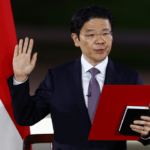Donald Trump, the real estate mogul-turned-president, is pushing forward with a controversial plan backed by Israeli Prime Minister Benjamin Netanyahu and championed by Israeli conservatives. First floated by his son-in-law Jared Kushner during Trump’s initial administration, the proposal calls for relocating Palestinians from Gaza to neighboring Arab countries and transforming the enclave into a luxury coastal destination.
With its Mediterranean shoreline and strategic location, Gaza is being positioned for U.S. control, with American investment poised to turn the war-ravaged territory into a lucrative real estate asset. Israel’s sweeping military response to Hamas’s October 7 attack has left Gaza in ruins, paving the way for this vision. For Netanyahu’s government, U.S. control offers a crucial security buffer, preventing displaced Palestinians from returning and potentially reviving Hamas or other Islamist militant groups.
Trump’s proposal has ignited a global backlash, drawing outrage from Gazans, the broader Islamic world, and European leaders alike. While some have floated the idea of resettlement with U.S. financial backing as a means to ease Gaza’s crushing humanitarian crisis, resistance remains formidable. For much of the Muslim world, Gaza is more than just territory—it is a symbol of Islamic solidarity, and its depopulation is viewed as an assault on both religious and political identity. In Europe, officials warn that Trump’s plan—particularly the forced relocation of Palestinians to Egypt and Jordan—could deal a final, irreparable blow to the already fragile prospects of a two-state solution.
The idea of “cleaning out” Palestinians to turn a profit in real estate has long united Israel’s settler movement and certain figures in Donald Trump’s orbit of U.S. developers. For decades, state-backed settlers have laid claim to Palestinian land, using concrete and steel not just to build towns but to cement political realities, ensuring that Palestinians are permanently displaced.
This approach resonated with key figures in Trump’s first administration—not only because it was stacked with apocalyptic evangelicals who see Jewish control of the Holy Land as a biblical prerequisite for the Second Coming, but also because it aligned with the real estate instincts of Trump’s inner circle. No one embodied this more than Jared Kushner, the driving force behind a 2020 Middle East “Peace” plan that never materialized but was strikingly focused on investment rather than sovereignty.
Trump has now taken the idea to its most extreme conclusion, pushing for the U.S. to seize control of Gaza and forcibly remove its two million residents. His plan envisions development on land flattened by Israeli airstrikes. He has made clear that the U.S. will take over the Gaza Strip and reshape it entirely, asserting full ownership. Last month, he dismissed concerns about Gaza’s population, describing the situation as a matter of clearing out more than a million and a half people.
Israel has long proposed various economic plans for Gaza, all while maintaining a strict siege and insisting on ultimate control over the region. One such proposal, to build an artificial island off Gaza’s coast to host a seaport and airport, was revived last year by Israel’s former foreign minister in an effort to address the frustration of EU diplomats seeking a political resolution. Trump’s plan echoes this proposal, with the president envisioning Gaza as a new “Riviera of the Middle East.” Steven Witkoff, his Middle East envoy, has backed the idea of relocating Palestinians, asserting that a better life doesn’t have to be tied to the physical space in which one resides.
Meanwhile, Israeli settler groups that were evacuated from Gaza under the 2005 disengagement plan are eager to return. In December, the real estate agency Harey Zahav, which caters to settlers, released an image of new buildings rising amid the rubble of Gaza, accompanied by the message that owning a house on the beach is a tangible dream. It remains unclear how these settler ambitions, or those of the Israeli government, will align with Trump’s takeover plan, though there is a history of collaboration between the two.
The Trump administration’s plan for Gaza appears to be nearing fruition. With the territory now under Israeli control, a formal handover to the U.S. seems increasingly likely, offering Israel a way to rid itself of the blame tied to this contentious piece of land. However, such a move would effectively mark the end of Palestine, a prospect long advocated against by much of the international community. The West Bank, now nearly fully under Israeli control, shows no signs of returning to Palestinian hands. Losing Gaza to U.S. control, with an eventual handover to Israel, would be the final blow to the Palestinian cause. And it is none other than the calculating real estate magnate, Donald Trump, who has set this entire project in motion, orchestrating the threats, talks, and calls that have propelled it forward.








